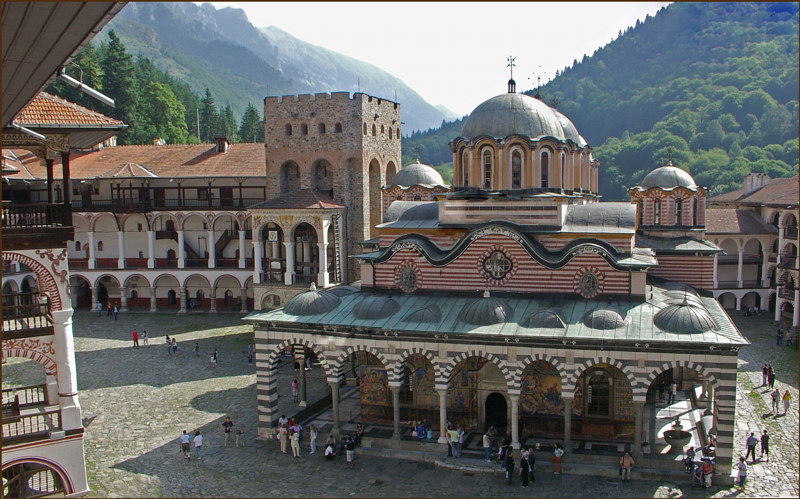Rila Monastery is the largest monastery complex in Bulgaria. It is situated deep in the heart of Rila Mountain. It is a national historical reserve, included in UNESCO World Natural and Cultural Heritage List; recipient of the Golden Apple Award of F.I.J.E.T., and a fascinating local and international tourist site. The monastery is believed to have been founded by a hermit, John of Rila, in the 10th century, during the reign of the Bulgarian Tsar Peter (927-968). St John of Rila, whose mummified relics are exhibited for pilgrims in the main church, in fact lived in a cave about half-an-hour walk away from the present-day monastery complex. The monastery itself is considered to have been built by his scholars, who came to the place to be taught by him. The monastery has enjoyed great respect and privileges: all the Bulgarian tsars from Ivan Assen II (1218-1241) to the fall of Bulgaria under Ottoman rule at the time of Ivan Shishman (1371-1393) made generous donations to the monastery. The Donation Deed of Tsar Ivan Shishman (1378) testifies to that and also to the preferences the monastery benefited from. After several acts of plundering and burning, the monastery was restored in the 19th century. Many famous builders of that time contributed to the restoration – Master Pavel Ivanovich, Alexii Riletz, and master Milenko. The rich wall paintings are the work of iconographers from the Samokov and Bansko art schools – Zahari Zograph, St. Dospevski, T. Vishanov, and Molerov. The woodcarvings are representative of the typical renaissance rich relief ornaments in the Mount Athos style. Throughout the centuries, the monastery has been one of the most important cultural, scholarly and writing centers, and the home of many famous clerics. In the 15th century, it was a literary center. Although it has been repeatedly plundered, it has a book collection numbering more than 32,000 volumes, including 9000 old typographic copies, 250 manuscripts from the 11th-19th centuries, and some 100 annotation manuscripts. Once in the complex, it is worth visiting the monastery’s museum, which hosts a unique work of art, namely - Raphael’s Cross. The cross is made of a whole piece of lime wood (81cm x 43cm) and is named after its creator. The monk used fine chisels and small knives to carve 36 main biblical scenes, 140 religious scenes in total and over 1500 small figures into the cross. The cross was finished in 1802 after the monk worked on it for no less than 12 years, losing his sight upon completion.
|


